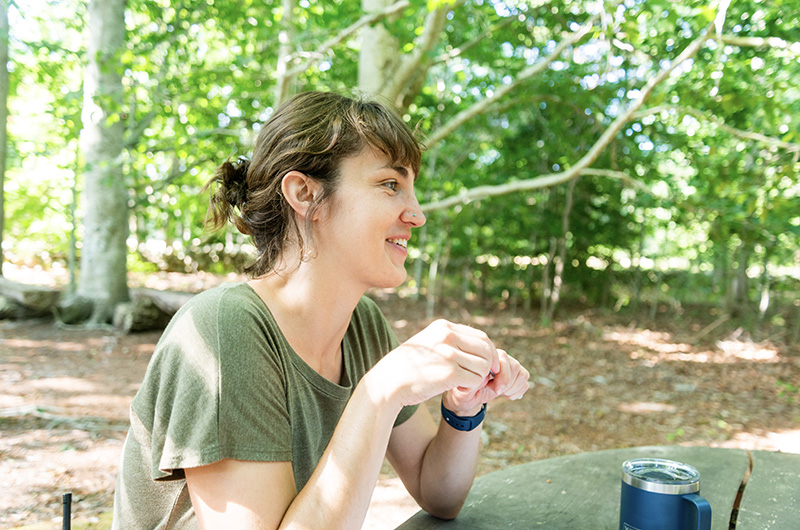After two-year process of planning, mapping and environmental impact analysis, the Polly Hill Arboretum, in collaboration with the state’s Department of Conservation and Recreation (DCR), is taking the next step in creating sustainable, on-site housing for permanent staffers and interns alike.
“The pandemic was really a magnifying glass on the Island housing crisis for us,” said Tim Boland, executive director of Polly Hill, a nonprofit horticultural research and education institution, with rare tree and shrub specimens from across the globe, as well as 40 acres of managed native forest in West Tisbury. “Since it began, we have been running at basically 70 per cent staff.”
While they’ve done their best to provide housing stipends, Mr. Boland said, the problem lies with staffers actually finding rentals. It is a problem that has particularly impacted their internship program.
“It’s one of the few programs in the U.S. that still maintains curatorial techniques and training,” said Mr. Boland.
The arboretum has approval for two 1,008-square-foot housing units to be built in a grove of oak, beech and maple, tucked away neatly behind the arboretum parking lot.
Emily Ellingson, the arboretum’s new curator and assistant director, is living proof of the program’s efficacy: She herself began as a Polly Hill curatorial intern in 2013.
“It’s what inspired me to be a curator, and now I get to come back and do it here,” said Ms. Ellingson.
Since beginning in her role this November, much of Ms. Ellingson’s efforts have been focused on the housing project, especially on the surveying the build site, since those woodlands are subject to conservation restrictions by the DCR.
“The first stage was to actually map out all of the trees,” she said. “Identifying all the species, and getting information about them.”
The location was initially selected because of clearing resulting from oak die-off.

“The black oaks have suffered a lot,” said Mr. Boland, an oak expert and member of the International Oak Society; he cited spring canker worm, cynipid wasps and a proneness to rot as contributors.
White oaks, however, remain as strong as ever, and join American beech as the area’s most prominent species. They found only four beetlebungs, necessitating a detour in a planned pathway to conserve the iconic Island trees. A Massachusetts Natural Heritage Program botanist also examined the site, ruling out any impact on endangered cranefly orchid or box turtle habitat.
Once impact was determined, the planning moved on to other sustainable concerns. They calculated the clearing’s solar gain, ensuring the feasibility of solar power.
“Right now, we are, more or less, 100 per cent solar on our buildings, and we want to maintain that,” Mr. Boland said.
There will also be a shaded parking area with EV charging, and a de-nitrifying septic system will be installed on location. The houses’ proximity to existing utilities will minimize developmental sprawl, a major priority of the DCR.
“They also had a condition that we couldn’t plant any non-native lawns,” said Ms. Ellingson.
Under those guidelines, Ms. Ellingson developed a “revegetation plan,” using native plants mostly sourced via the arboretum’s MV Wild Type program, which collects and cultivates Island natives. Included is a base layer of seasonal grasses and (flowering herbaceous) forbs, and a mid-story shrub layer of viburnum, serviceberry, and chokeberry, among many others. The planting will also involve a vigilant effort to remove the pernicious weeds that may arise.
The buildings were designed by Peter Rodegast, and they will be constructed by Tucker Hubble, both of whom are long time arboretum collaborators.
“Keeping that kind of consistency with the vernacular will be great,” said Mr. Boland.
The buildings will be constructed with as much timber salvaged from the site as possible — they have already identified a few straight white oaks that they plan to bring in for planing.
The process, which has a $1.4 million price tag, is slated to be completed by June 2023.
“Its pretty exciting,” said Mr. Boland. “If we can build these as net zero dwellings, we could get approval from the DCR to build a third.”








Comments
Comment policy »